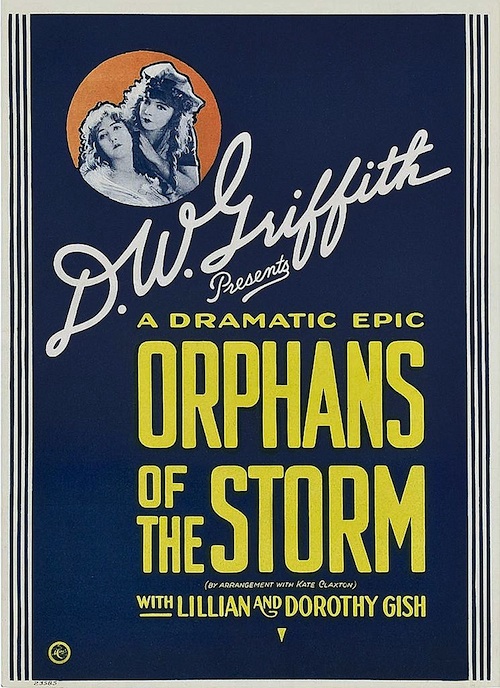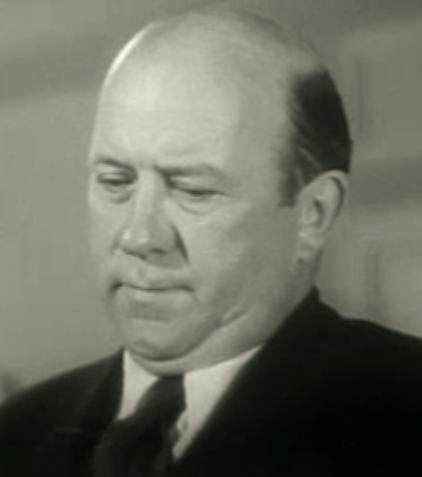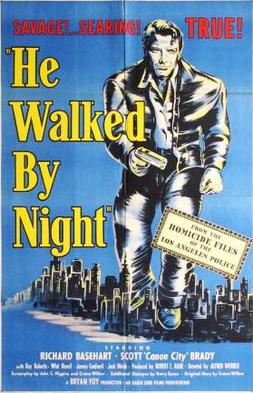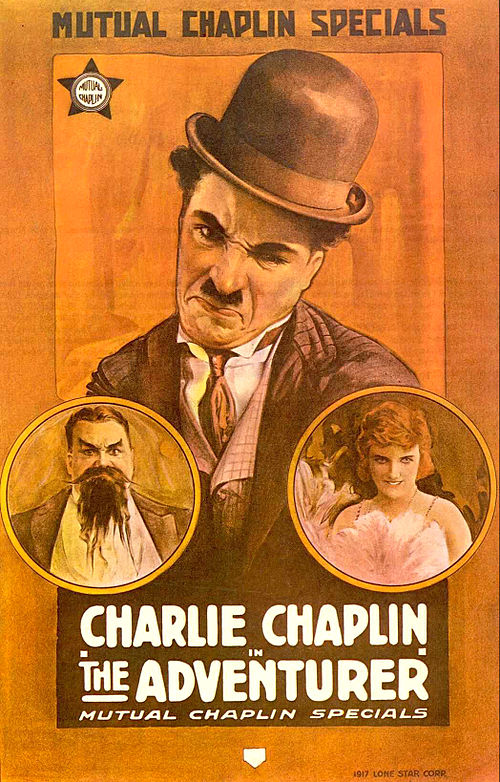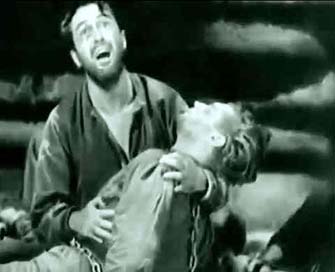
Cabiria
Silent (No soundtrack) From the Wikipedia entry for "Cabiria":  Cabiria is a 1914 silent movie from the early years of Italy's movie industry, directed by Giovanni Pastrone (1883-1959). The movie is set in ancient Sicily and Carthage during the period of the Second Punic War (218-202 BC). It follows a melodramatic main plot about an abducted little girl, Cabiria, and features an eruption of Mt. Etna, heinous religious rituals in Carthage, the alpine trek of Hannibal, Archimedes' defeat of the Roman fleet at the Siege of Syracuse and Scipio in North Africa. Apart from being a classic on its own terms, the film is also notable for being the first film in which the long-running film character Maciste makes his debut. According to Martin Scorsese, in this work Pastrone invented the epic movie and deserves credit for many of the innovations often credited to D.W. Griffith and Cecil B. DeMille. Among those were the first use of the moving camera, thus freeing the narrative film from "static gaze". Original text can be found at http://en.wikipedia.org/wiki/Cabiria License terms may be found at http://creativecommons.org/licenses/by-sa/3.0/ -This is the 123 minute restored print version.
Cabiria is a 1914 silent movie from the early years of Italy's movie industry, directed by Giovanni Pastrone (1883-1959). The movie is set in ancient Sicily and Carthage during the period of the Second Punic War (218-202 BC). It follows a melodramatic main plot about an abducted little girl, Cabiria, and features an eruption of Mt. Etna, heinous religious rituals in Carthage, the alpine trek of Hannibal, Archimedes' defeat of the Roman fleet at the Siege of Syracuse and Scipio in North Africa. Apart from being a classic on its own terms, the film is also notable for being the first film in which the long-running film character Maciste makes his debut. According to Martin Scorsese, in this work Pastrone invented the epic movie and deserves credit for many of the innovations often credited to D.W. Griffith and Cecil B. DeMille. Among those were the first use of the moving camera, thus freeing the narrative film from "static gaze". Original text can be found at http://en.wikipedia.org/wiki/Cabiria License terms may be found at http://creativecommons.org/licenses/by-sa/3.0/ -This is the 123 minute restored print version.
File:Cabiria (1914).webm
Cabiria is a 1914 Italian silent film, directed by Giovanni Pastrone (1883–1959) and shot in Turin. The film is set in ancient Sicily, Carthage, and Cirta during the period of the Second Punic War (218–202 BC). It follows a melodramatic main plot about an abducted little girl, Cabiria, and features an eruption of Mt. Etna, heinous religious rituals in Carthage, the alpine trek of Hannibal, Archimedes' defeat of the Roman fleet at the Siege of Syracuse (214–212 BC) and Scipio Africanus maneuvering in North Africa. Apart from being a classic on its own terms, the film is also notable for being the first film in which the long-running film character Maciste makes his debut. According to Martin Scorsese,< name="Ebert2006"></> in this work Pastrone invented the epic movie and deserves credit for many of the innovations often attributed to D.W. Griffith and Cecil B. DeMille. Among those were the first use of the moving camera, thus freeing the narrative film from "static gaze".
The historical background and characters in the story are taken from Livy's Ab Urbe Condita (book) (written ca. 27–25 BC). In addition, the script of Cabiria was partially based on Gustave Flaubert's 1862 novel Salammbo and Emilio Salgari's 1908 novel Cartagine in fiamme (Carthage in Flames).
Plot summary
Source:The entrance to the huge Temple of Moloch is a gigantic three-eyed head, with the mouth as portal. One hundred young children are to perish as offerings. Inside are frenzied devotees and the colossal seated statue of the winged god Moloch is a hollow bronze furnace. The great chest opens for each victim and when a youngster is slid into the inferno, the door closes and the open mouth belches flame. Croessa, Fulvius and Maciste sneak into the temple and the slave boldly snatches Cabiria away from the priest. Pursued by a frenzied mob, they make their way up to the roof, down the gargantuan façade, and back to the inn. All except Croessa, who pays a fatal price for the rescue.
The Numidian King Massinissa is visiting Carthage and Hasdrubal (Barcid), brother of Hannibal, promises him his beautiful daughter Sophonisba, in marriage. In a great audience hall with two huge elephantine columns, Massinissa dispatches gifts and a message to meet secretly to Sophonisba, who on receiving them is giddy with anticipation.
Bodastoret, the innkeeper, sneaks into the Temple of Moloch and for a reward betrays the Romans’ whereabouts and intentions. Fulvius, Maciste and Cabiria are ambushed by the Priest’s henchmen as they attempt to flee the city the next morning, but Fulvius escapes by leaping spectacularly from a high precipice and swimming away. Maciste and Cabiria flee, henchmen hard on their heels, to the cedar garden of Hasdrubal and encounter Massinissa and Sophonisba just as their secret tryst is commencing. Maciste implores the aristocratic couple – who have both concealed their true identities—to rescue Cabiria. Amid the chaos, Sophonisba, Cabiria and a servant run away while Massinissa falsely denies to the Priest’s men that he has seen any little girl. Maciste, however, is captured, tortured and chained to a great millstone, which he must turn, but can still manage to intimidate everyone around him.
Fulvius, still bearing the ring Croessa had given him, is cast adrift and soon rescued. Although his rescuers rob the unconscious Fulvius, one of them recognizes the ring on his finger and he is carried to Batto’s house, which has been rebuilt. The parents are overjoyed to learn that Cabiria is still alive at least when he last saw her. As he takes his leave Fulvius vows to seek Cabiria if he should ever return to Carthage.
An intertitle relates that Syphax, King of Cirta – a rival desert kingdom—has deposed Massinissa and caused him to disappear into the desert. Hasdrubal (Barcid) now gives Sophonisba to the victor instead, to shore up his new alliance against Rome. Sophonisba is distinctly unhappy and when she appears in her finery at the betrothal ceremony she swoons and breaks the ceremonial vessel.
Already in possession of much of North Africa, the Roman general and consul Scipio Africanus strategizes with his new ally, Massinissa. They dispatch the resourceful Fulvius again as a spy in Carthage to observe its defenses. Stealthily deploying an impressive human pyramid of Roman soldiers, Fulvius successfully breeches the city walls.
In the elephantine hall, Hasdrubal dispatches the High Priest Karthalo on a mission to persuade Syphax to attack the Romans directly. Karthalo’s camel caravan traverses the vast dunescape. Meanwhile, Fulvius finds time to look for Maciste and Cabiria—now prisoners for 10 years. With a combination of intimidation and bribery, he extracts information from Bodastoret. With Fulvius disguised as a freedman, they secretly observe Maciste still in chains and harnessed to his millstone. That night, Fulvius returns to wake the sleeping strongman who is overwhelmed with happiness at again seeing his beloved master. Back at their hideout at the inn, Bodastoret is overcome with shock at seeing Maciste and dies. Fulvius and Maciste make good their escape down the city walls.
In Cirta, before a palace with two huge feline columns, Syphax is given a formal sendoff by Sophonisba and Karthalo, the latter of whom has an eye for the former’s lovely slave “Elissa”. While the military maneuvers continue, Fulvius and Maciste have fallen into dire straits, exhausted and thirsty in the desert wilderness. Maciste catches sight of a fire in the distance—Syphax’s encampment has been torched by his enemies. The two Romans are soon captured by the mounted Cirtans.
While outside the city King Syphax has been captured, Maciste and Fulvius are swept up with other prisoners within Cirta’s city walls. “Elissa”, who is really Cabiria, takes pity on the imprisoned pair and passes water to them without recognizing who they are. Cirta is under siege by Massinissa’s forces. Soldiers scale ladders outside the walls while boulders, spears, arrows and boiling oil rain down on them.
Sophonisba dreams of triple-eyed Moloch. Unnerved, she interprets her dream as an omen that Cabiria/Elissa will somehow spell the doom of the city and confesses to Karthalo what happened in the cedar garden so many years ago.
Maciste, who has forced the iron bars of his prison cell with his enormous strength, determines to exact a revenge upon Karthalo. He intrudes through a window just in time to save Elissa—whom he now recognizes as Cabiria—from a dire fate at the Priest's hands. Fulvius soon joins the fray, but in the chaos of flight, they lose control of Cabiria and are forced to barricade themselves in a store room. Fulvius is appalled to learn that the girl he just saw is none other than Cabiria.
Just outside the city walls is another appalling sight: King Syphax in chains taunted by the victorious King Massinissa, who is by now decked out in Roman military regalia. The Cirtans have had enough and surrender. In the hall of the gigantic feline columns, Sophonisba grandiloquently surrenders and abases herself before her former fiancé and present husband’s captor—Massinissa. He in turn demurs and, just as elaborately, pledges himself to her. In a ceremonial hall with indigenous deities, the pair further ritualize their solidarity. Sophonisba marries Massinissa and it is resolved that she will not be subjected to being paraded in a Roman triumph.
Fulvius and Maciste enjoy the ample provisions of the store room, until the besieging guards attempt to smoke them out. Massinissa learns of the circumstances of the two “heroes” and—apparently ambivalent about such former Roman comrades—determines to spare them. Fulvius takes the opportunity to implore Sophonisba on Cabiria’s behalf, but in a fit of pique she tells the distraught Roman that Cabiria is dead.
Scipio and his lieutenant Gaius Laelius camp near Cirta. Lelius, whose forces have preceded Scipio’s, tells his commander of the royals’ treachery. At first Massinissa arrogantly defies Scipio, dashing the Roman general’s message tablet to pieces, but later he wilts in the face of Rome’s majesty. He implores Scipio, however, to spare Sophonisba the humiliation of being paraded in Rome. Scipio will not relent.
In desperation, Massinissa persuades Fulvius—in reciprocation for having spared him earlier and in anticipation of an unspoken future favor—to lend him his slave Maciste. The slave receives a bracelet, inscribed with a message, and takes it to Queen Sophonisba. Receiving it, the Queen reads the message and understands that she is to poison herself with the powder in the hollow gift. Drinking the dissolved poison, Sophonisba divests herself of her jewelry with great flourishes. Flavius arrives and, too late, they realize the purpose of Massinissa's request. Sophonisba, writhing in agony, reveals that Cabiria still lives and, as repayment for the gift of death, she will be spared a second time from the fate of living sacrifice. Cabiria is retrieved from her prison cell and arrives in time to see the moribund Queen expire.
Fulvius and Cabiria are crossing the sea on the way to Rome. As Maciste plays the panpipes in the bowsprit, Fulvius pledges his love to Cabiria and festive sea sprites encircle the boat in a giant, diaphanous garland.
Cast and characters
- Historical figures denoted by an asterisk (*).
- Carolina Catena ... Cabiria, as a Child
- Émile Vardannes ... Batto, father of Cabiria
- Gina Marangoni ... Croessa, nurse of Cabiria
- Lidia Quaranta ... Cabiria, as an adult
- Dante Testa ... Karthalo, the High Priest of Carthage
- Umberto Mozzato ... Fulvio (Fulvius) Axilla, Roman patrician and spy
- Bartolomeo Pagano ... Maciste, slave of Axilla
- Raffaele di Napoli ... Bodastoret, an Innkeeper
- Émile Vardannes ... Hannibal*, Carthaginian general
- Edoardo Davesnes ... Hasdrubal Gisco*, Carthaginian general; brother of Hannibal
- Italia Almirante-Manzini ... Sofonisba* (Sophonisba), daughter of Hasdrubal
- Alessandro Bernard ... Siface* (Syphax), King of Cirta
- Luigi Chellini ... Scipione* (Scipio Africanus), Roman consul and general
- ?????????? ... Lelius* (Gaius Laelius), friend and sub-commander of Scipio
- Vitale Di Stefano ... Massinissa* (Masinissa), King of Numidia
- Enrico Gemelli ... Archimede* (Archimedes), Greek engineer and philosopher
- Ignazio Lupi ... Arbace
Production
Italian author Gabriele d'Annunzio contributed to the screenplay writing all of the intertitles and naming all characters and the movie itself. The film was noted as being the first popular film to use the tracking shot – the camera is mounted on a dolly allowing it to both follow action and move within a film set or location. For years afterward a tracking shot was erred to by both cameramen and directors as a 'Cabiria' shot. However in many cases Pastrone used these shots with no real purpose other than the novelty of camera movement within a location. In some instances the camera rolls toward and then right past what should be the focus of the shot. However, the movement was such an innovation at the time that other film makers quickly incorporated it. The film was a major influence on D.W. Griffith's Intolerance (film) (1916). The famous crane shot moving down and into the festival in Babylon is in a sense a 'Cabiria' shot taken to the ultimate extent.The elephants used in several scenes in the film are obviously Indian elephants, rather than the authentic North African elephant (which is long extinct) or the African elephant (which is undomesticable).
Film critic Roger Ebert has said that Griffith "moves the camera with greater freedom and has a headlong narrative and an exciting use of cross-cutting that Pastrone does not approach."< name="Ebert2006" /> The film also marked the debut of the Maciste character, who went on to have a long career in Italian sword and sandal films. For many years, Cabiria and Griffith's Judith of Bethulia (1914) were considered the first feature films. However, several earlier examples have come to light in recent years, including the Australian film The Story of the Kelly Gang (1906).
Distribution, remake and restorations
In June 1914, Cabiria became the first motion picture to be screened on the grounds of the White House when a screening on the lawn was viewed by President Wilson and his family from a porch.
See also
- 1914 in film
- List of historical drama films
- List of films based on military books (pre-1775)
Category:1914 films
Category:War drama films
Category:Epic films
Category:Black-and-white films
Category:Italian films
Category:Italian historical films
Category:Films based on works by Emilio Salgari
Category:Films set in Carthage
Category:Films set in Sicily
Category:Italian silent films
Category:1910s historical films
Category:Second Punic War films
Category:Peplum films
Category:Hannibal
Category:Films based on Italian novels
Category:Films based on French novels

